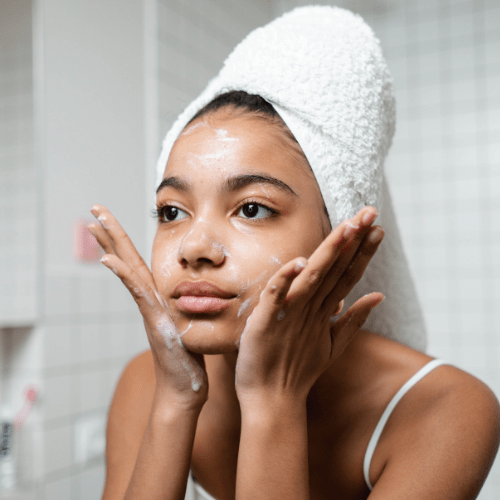Rosacea, often characterised by persistent facial redness and visible blood vessels, can be a source of discomfort and self-consciousness for many. While there’s no definitive cure for this chronic skin condition, various treatments aim to manage its symptoms. One unconventional yet increasingly popular method is the use of Botox or other anti-wrinkle injections. In this blog post, we’ll delve into what Botox is, how it can help alleviate rosacea symptoms, and what you should consider if you’re contemplating this approach.
What is Rosacea?
Rosacea is a skin disorder primarily affecting the face. It often begins with episodes of facial flushing or blushing and can progressively lead to persistent redness, visible blood vessels, and even pimple-like bumps on the skin. While the exact cause of rosacea remains elusive, factors like genetics, environmental triggers, and the presence of certain skin mites are thought to play a role.
Understanding Botox
How Botox Helps with Rosacea
Botox’s primary function is to relax muscles, but it can also alleviate symptoms of rosacea by targeting specific aspects of the condition:
- Reducing Facial Flushing: Botox can help lessen the intensity and frequency of facial flushing, which is a common rosacea symptom. By blocking nerve signals that cause blood vessels to dilate, it minimises the redness associated with rosacea.
- Managing Skin Inflammation: Some studies suggest that Botox may have anti-inflammatory properties. By mitigating inflammation, it can help control the persistent redness that characterises rosacea.
- Smoothing Skin Texture: Botox can contribute to smoother skin by minimising the appearance of fine lines and wrinkles often accompanying rosacea.
Preventing Rosacea Triggers
Rosacea-prone skin can be highly sensitive to various triggers that exacerbate symptoms. To minimise flare-ups, it’s essential to identify and avoid these common triggers. Protect your skin from the sun with sunscreen and hats, dress appropriately for temperature extremes, and reduce spicy food and hot drink consumption.
Limit alcohol and caffeine intake, manage stress through relaxation techniques, and choose gentle, fragrance-free skincare products. Be cautious of medications that may worsen rosacea, and opt for lukewarm baths while avoiding prolonged exposure to heat.
Lastly, exercise in cooler conditions, wear moisture-wicking clothing and be mindful of allergens and irritants in cosmetics and household products. By taking these steps, you can effectively manage your rosacea and maintain healthier, less reactive skin.

Is Botox for Rosacea Right for You? - Weighing the Pros and Cons
Before opting for Botox as a rosacea treatment, it’s essential to consider the following factors:
Pros
- Reduced Redness: Botox can significantly diminish facial redness, offering relief from the most visible and bothersome rosacea symptom.
- Improved Skin Texture: The wrinkle-reducing effects of Botox can help smooth the skin, making rosacea less conspicuous.
Cons
- Temporary Results: Botox is not a permanent solution for rosacea. Its effects typically last three to four months, meaning you’ll need ongoing treatments.
- Side Effects: While generally safe, Botox injections can lead to side effects such as bruising, swelling, or temporary muscle weakness.
Final Thoughts
In the quest for rosacea relief, Botox emerges as a promising contender. It offers the potential to reduce redness, manage inflammation, and improve skin texture. However, it’s vital to consult with one of our medical Doctors before proceeding, as individual suitability varies. Remember that Botox provides temporary relief, and long-term management strategies should also be considered. If you’re considering this treatment, discuss the pros and cons thoroughly with your Doctor to make an informed decision about your rosacea journey.
Botox for Rosacea FAQs
Rosacea is a skin disorder primarily affecting the face. It typically starts with facial flushing or blushing and can progress to persistent redness, visible blood vessels, and pimple-like bumps on the skin. The exact cause is not known, but genetics, environmental triggers, and skin mites are believed to play a role.
No, the results of Botox for rosacea are not permanent. The effects typically last around three to four months, so ongoing treatments are necessary for sustained relief.
While generally safe, Botox injections can lead to side effects such as bruising, swelling, or temporary muscle weakness. These effects are usually temporary and mild.
Botox suitability varies for everyone. It’s essential to consult with a medical professional who can assess your individual case and recommend the most suitable treatment options.
You may start noticing improvements in rosacea symptoms within a few days to a week after the Botox treatment. The full effects may take up to two weeks to become apparent.














